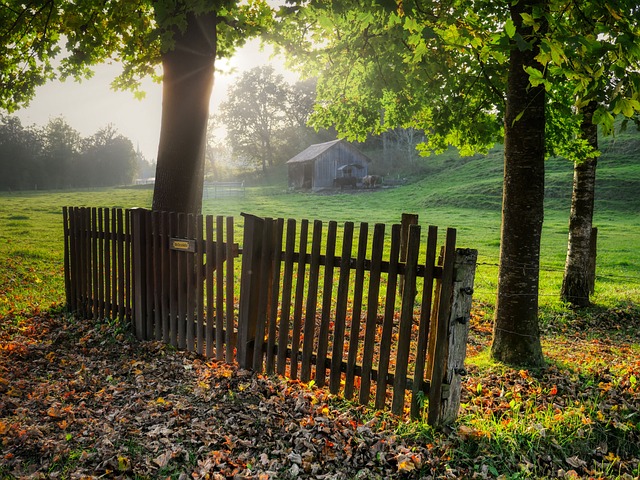In New Bedford, MA, residential fence installation is a popular endeavor, offering both aesthetic and functional improvements to homes. Before proceeding, homeowners must understand the city’s fencing regulations to ensure compliance and avoid potential fines. This article guides you through the process, from navigating local laws to choosing durable materials, understanding the installation process, and learning essential maintenance tips for your new fence. By the end, you’ll be well-equipped to transform your outdoor space.
- Understanding New Bedford's Fencing Regulations
- Benefits of Residential Fence Installation
- Choosing the Right Material for Your Fence
- The Installation Process: What to Expect
- Maintaining Your New Fence: Tips and Tricks
Understanding New Bedford's Fencing Regulations
New Bedford, like many cities, has specific regulations regarding residential fence installations to maintain aesthetic and safety standards. Before hiring a fence installation company, it’s crucial to familiarize yourself with these local laws. Fences in New Bedford must adhere to certain height restrictions, typically no higher than 6 feet, and some neighborhoods have additional rules about the materials used, particularly in historic districts where vinyl or wood fences might be preferred over iron or chain-link options.
These regulations often aim to preserve the character of the neighborhood and ensure that new additions blend seamlessly with existing structures. Check with the local building department for detailed permit requirements and specific guidelines. Understanding and complying with these regulations not only ensures your fence installation project goes smoothly but also helps maintain the value and charm of your New Bedford property.
Benefits of Residential Fence Installation
Residential fence installation offers numerous benefits for homeowners in New Bedford, MA. One of the primary advantages is enhanced security and privacy. A well-installed fence acts as a physical barrier, deterring unauthorized entry and providing peace of mind, especially for families with young children or pets. It allows you to create a secure outdoor space where you can relax and enjoy time with your loved ones without worrying about unfamiliar visitors.
Additionally, residential fences contribute to the overall aesthetic appeal of your property. They come in various styles, materials, and colors, enabling homeowners to choose a design that complements their architectural style and personal taste. A beautiful fence can significantly increase the curb appeal of your home, potentially boosting its value on the real estate market. Moreover, it provides noise reduction, creating a quieter environment, which is essential for peaceful living.
Choosing the Right Material for Your Fence
When it comes to residential fence installation, selecting the right material is a significant decision that impacts both the durability and aesthetics of your fence. Different materials offer unique advantages, from cost-effectiveness to longevity and visual appeal. Wood, for instance, is a popular choice due to its natural beauty and ability to blend seamlessly with outdoor spaces. However, it requires regular maintenance to prevent rot and pest damage. On the other hand, vinyl fences are low-maintenance, durable, and available in various colors and styles, making them a versatile option.
Steel and iron fences provide exceptional strength and security, ideal for areas needing added protection. They offer a classic, traditional look but may be more expensive and require specific installation techniques. Concrete fences are another long-lasting option known for their solid construction and low maintenance. Consider your climate, budget, and personal aesthetic preferences to choose a material that aligns best with your needs and enhances the value of your property.
The Installation Process: What to Expect
When it comes to residential fence installation, understanding the process is key to a smooth and successful outcome. Typically, the journey begins with a consultation where the company assesses your property and discusses your preferences. They’ll measure the area, suggest suitable fence types, and provide an estimate based on materials and labor. Once you approve the plan, the installation can commence.
The actual process involves preparing the ground, digging holes for posts, and setting them in concrete to ensure stability. The fence panels are then securely attached, and any necessary hardware or gates are installed. Throughout, professional installers adhere to safety standards and local building codes, ensuring your new fence is not only aesthetically pleasing but also sturdy and secure.
Maintaining Your New Fence: Tips and Tricks
After your new fence is installed, proper maintenance will ensure it looks good and lasts for years to come. Start by sweeping or brushing away any debris, leaves, or dirt regularly, especially after harsh weather conditions. This prevents damage from sharp objects and keeps the fence clean.
Regular inspection is another key tip. Look for signs of wear, rot, or pests like termites. Repair minor issues promptly to prevent them from escalating. Use appropriate cleaning solutions or water pressure washers sparingly, avoiding excessive pressure that could damage the fence’s finish or structure. Keep plants and trees well-trimmed to avoid their roots pushing against the fence posts.
